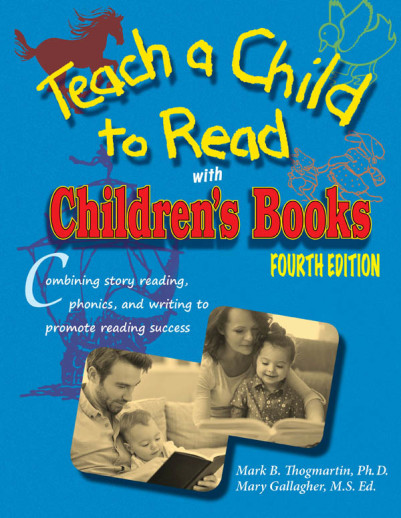We use cookies to make your experience better. To comply with the new e-Privacy directive, we need to ask for your consent to set the cookies. Learn more.
Teach a Child to Read With Children's Books 4ED
If conventional phonics is not working with your child, or if phonics instruction is turning your "eager to read-er" into a "do we have to?" reader, here's an approach you should try. Based on techniques used in the Reading Recovery program and on observations of methods used by "natural" readers (children who learn to read at young ages despite no formal instruction), this approach takes a middle road between phonics and "sight reading." It is designed to be used one-on-one in a tutoring situation not in a classroom environment so it works very well in a home school. The first ingredient is reading, reading, reading to your young child. Predictable readers are used heavily in beginning instruction so that the child can begin to "read" successfully without knowing all of the rules, and can begin to recognize letter-sound correlations in familiar words. Some separate phonics instruction is done as part of the lesson. Initially, letter sounds are taught. From there, instruction depends on the previous day's experience. However, most of the phonics instruction is done within the context of reading and writing about real stories in real books. Phonics rules are not learned in any set sequence, but as the need to use them arises. Books are reread until mastered, then rotated out, with a book on the "cutting edge" of the child's ability added to the mix. A list of recommended children's books is included.
The author is no stranger to the "great debate" on reading instruction. He has sixteen years of experience teaching in both public and private schools and, as headmaster of a Christian school, oversaw a home education program in which he worked with parents teaching their children to read. He realizes the strong preference homeschoolers have for phonics, but he makes a great case for considering a less "pure" approach. I do think this book is worth reading. After reading it, I realized that my children all learned a little this way, despite my attempts to teach them strictly phonetically. When Mark was learning to read, he just wouldn't wait for me to slowly make it through our phonics program. Armed with the essential basics, he wanted to read, and proceeded to do so; reading and rereading familiar books until they were mastered, demanding explanations of unfamiliar constructs as he went, and then applying this knowledge the next time he encountered a similar phonetic construct. All this from a child who seemed almost dense to me (compared with his older sisters) when using a strictly phonetic method. On reflection, I think he might have done much better from the start if I'd read this book and employed some of these methods. While not for everyone, and certainly not for those of you who won't even consider less than "pure" phonics, I'm hoping this will help with children who may "fall through the cracks" using a traditional phonics approach.


It is Bible based
Saw a good review on Cathy Duffy Reviews which described basically exactly what I thought I'd need for building our home-reading environment.
Cathy Duffy's top pick, and there are far too many reading programs out there for me to make sense of - I prefer a gentler, less worksheet-based approach. I've heard that this is a great simple…
Borrowed this book from the library and it is such a rich resource that we need it on our own shelves!